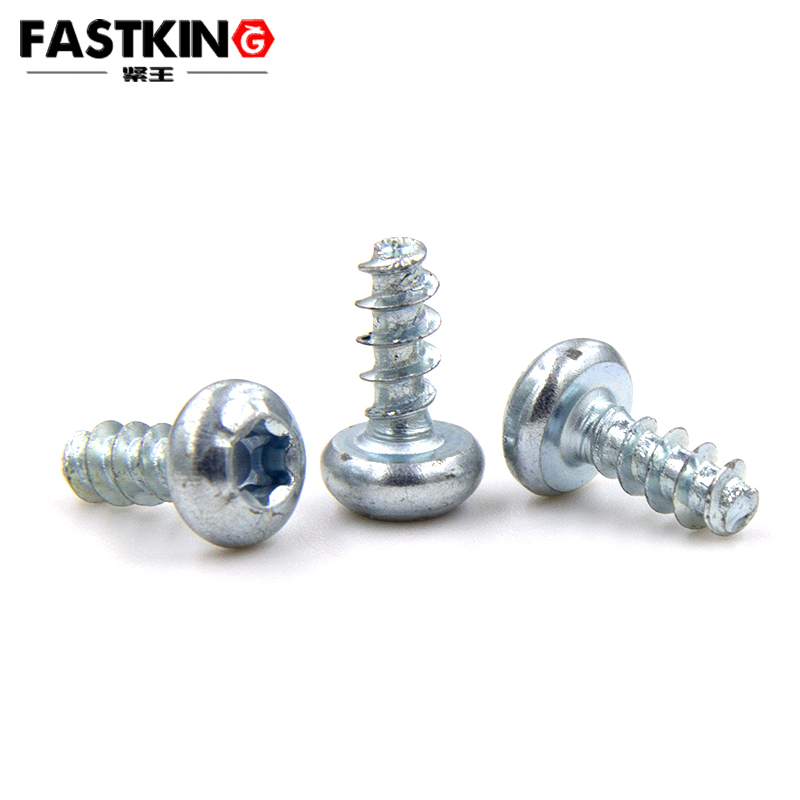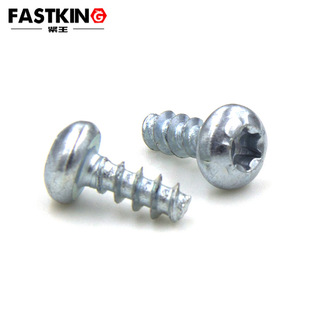- Torx screw,torx machine screw,torx self tapping screw
- sales@jlfastener.com
torx pan head self tapping screw with flat tail
Torx tapping screw
torx pan head self tapping screw with flat tail
- Description:In the rapidly evolving modern manufacturing industry, the pursuit of assembly efficiency, connection reliability, and cost control has never ceased. Among the myriad fastening solutions, the Pan Head
I. Deconstructing the Design: Every Detail Serves a Function
To fully understand the advantages of this screw, we must analyze the four core features embedded in its name:
-
Pan Head: Unlike countersunk heads, the pan head has a raised, domed top with a flat bearing surface at the bottom. This design provides a larger support area when contacting the workpiece surface, distributing clamping force effectively and preventing indentation or deformation on soft materials (e.g., plastic, wood). The protruding head also facilitates manual positioning and initial driving, while offering a visually industrial aesthetic.
-
Internal Torx: This is a revolutionary upgrade in drive systems. The Internal Torx recess and matching Torx driver achieve far more efficient engagement than traditional slotted, Phillips, or hex drives. Its advantages are evident:
-
Exceptional Torque Transmission: The large contact area nearly eliminates slippage during tightening, allowing higher torque application without risks of stripping, bit damage, or screw head rounding.
-
Precise Torque Control: It enables the use of electric or pneumatic tools for automated assembly, ensuring highly consistent preload at each fastening point and significantly improving product quality stability.
-
Extended Tool Life: Reduced wear from slippage markedly decreases bit replacement frequency and maintenance costs.
-
-
Flat End: Self-tapping screws commonly come with either a pointed (self-drilling) end or a flat end. The flat end design means the screw tip is blunt, lacking drilling capability. However, its core advantages lie in guidance and thread-forming quality. The flat end aligns more accurately with pre-drilled holes (or pilot holes), reducing deviation during initial tapping. It relies on its self-tapping thread to cut material, producing cleaner and more complete thread profiles.
-
Self-Tapping: This is its core functionality. The screw can independently tap matching internal threads in pre-drilled holes (or soft materials), eliminating the need for pre-embedded nuts or pre-tapping. This greatly simplifies production processes, reduces part counts and assembly steps, thereby significantly boosting production efficiency and lowering overall costs.

II. Synergistic Advantages: Unleashing Immense Potential
When these four features are combined, the Pan Head Internal Torx Flat End Self-Tapping Screw achieves a synergistic effect where “1+1+1+1 > 4”:
-
High Efficiency and Low Cost: The self-tapping feature eliminates pre-tapping processes and costs, while the Internal Torx drive ensures reliability and consistency in high-speed automated assembly, greatly increasing production line rhythm. Together, they deliver substantial time and labor cost savings.
-
High Reliability and Maintainability: The nearly maintenance-free Internal Torx drive significantly reduces the risk of screw head damage during repairs, making product maintenance, disassembly, and reassembly straightforward and reliable. The clean threads formed by the flat end allow multiple removals and reinstallations while maintaining strong clamping force—a challenge for rolled threads in soft materials.
-
Wide Applicability and Workpiece Protection: The pan head’s large bearing surface makes it ideal for plastic casings, aluminum alloy shells, thin metal sheets, and wooden structures. It provides strong fastening force without crushing or damaging workpiece surfaces, preserving product aesthetics and integrity.
III. Classic Application Scenarios
The design of this screw makes it excel in the following fields:
-
Electronics and Electrical Industry: Widely used in servers, computer cases, appliance housings, power adapters, etc. Its pan head avoids cable abrasion, the Internal Torx drive suits automated production lines, and its self-tapping capability is perfect for fastening plastic shells and metal frames.
-
Automotive Interiors and Components: Used to secure interior panels, wire harness clips, lamp covers, sensors, and other non-structural parts. Its vibration resistance and anti-loosening properties (thanks to well-formed threads) and efficient assembly method are ideal for large-scale automotive manufacturing.
-
Furniture Assembly and Office Equipment: Employed in joining boards, securing hardware, and assembling office chairs. The self-tapping feature eliminates the need for pre-tapping in panels, streamlining production.
-
Communication Equipment and Cabinets: Its reliable reusability is particularly valuable for network cabinets, switches, and other devices requiring frequent access for maintenance.


